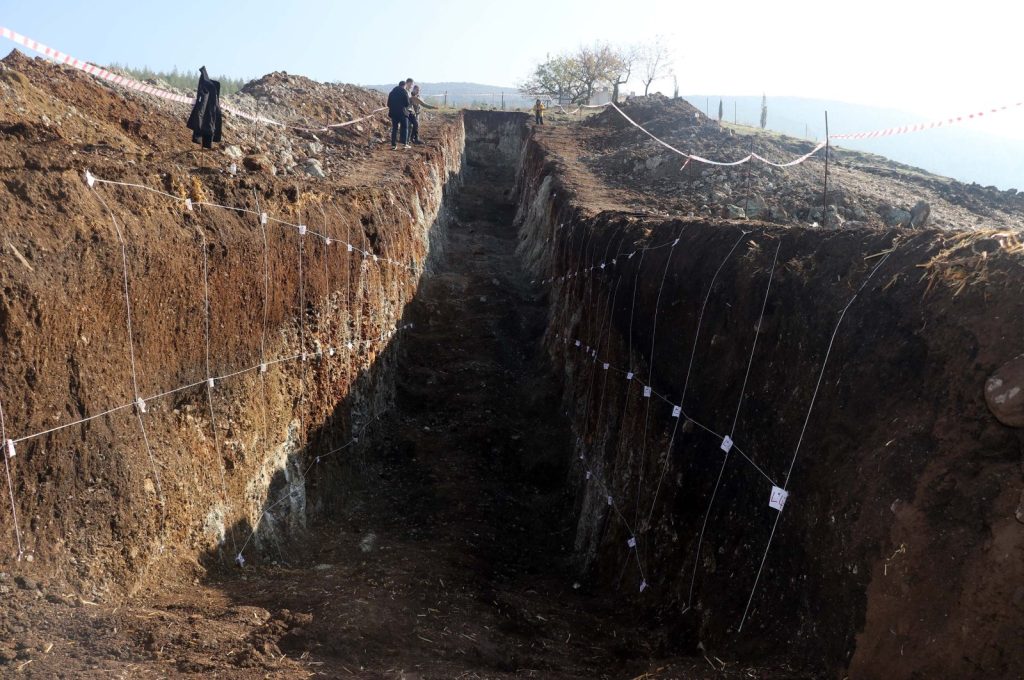Türkiye’s Disaster and Emergency Management Authority (AFAD), the General Directorate of Mineral Research and Exploration (MTA), 24 universities, over 100 scientists and more than 300 researchers are currently working together to study 132 active fault lines in Türkiye, as part of a large-scale seismic research project.
Scientists are focusing on understanding the earthquake history of these fault lines, the timing of the most recent earthquakes and the likelihood of future seismic activity in these areas. The data gathered will be shared with public institutions, municipalities and relevant authorities to help shape urban planning decisions based on the findings.
The AFAD plans to integrate the data into the Disaster Risk Reduction System (ARAS), aiming to minimize the potential impact of future disasters. The project comes in the wake of the devastating Feb. 6, 2023 earthquakes centered in Kahramanmaraş.
Orhan Tatar, general director of the AFAD’s Earthquake and Risk Reduction Department, explained that the project was initiated due to the lessons learned from the recent earthquakes and the need for a deeper understanding of Türkiye’s seismic risks.
“Türkiye has about 500 active fault lines that have the potential to generate earthquakes. Understanding the history of these faults, when the last earthquake occurred, how much displacement it caused and the recurrence intervals of these earthquakes is extremely important,” Tatar said.
He highlighted the significance of the project, noting, “This is the largest paleoseismological project in the world, with no other project that simultaneously studies 132 fault lines at this scale. The results will be used in various applications, particularly in creating integrated risk maps and planning for disaster preparedness.”
Once the project concludes, Türkiye will have a comprehensive Fault Database, which will be integrated into the ARAS system. Local governments and public agencies will use the project’s results for further analysis and implementation.
Tatar also emphasized that Türkiye, which has the highest number of active fault lines in the world, must continue its efforts to study these faults to reduce the risks of future earthquakes.
With 485 active fault lines currently mapped in Türkiye, Tatar explained that the total length of these fault lines reaches approximately 14,500 kilometers. “This is a significant number, and it’s crucial that we increase our efforts to study and understand these faults,” he said. “The results must be shared with public institutions and citizens in a clear and useful manner.”
Türkiye is one of the most seismically active regions in the world due to its location at the intersection of several major tectonic plates, including the Eurasian, African and Arabian plates. This geographical positioning makes it highly susceptible to earthquakes, which has led to an increased focus on earthquake preparedness and risk mitigation in recent years.
The Feb. 6, 2023 earthquakes in Kahramanmaraş were a stark reminder of the catastrophic potential of seismic events, leaving devastating losses in their wake.
In response, Türkiye has ramped up efforts to better understand its seismic risks and improve its disaster response capabilities.
Seismic activity in Türkiye is primarily concentrated along several fault zones, including the North Anatolian Fault, which runs from the Aegean Sea in the west to the eastern part of the country.
The country’s fault lines are responsible for some of the most destructive earthquakes in modern history, such as the 1999 Izmit earthquake, which killed thousands and caused extensive damage to the surrounding areas.
This ongoing risk has made studying and monitoring fault lines a national priority, particularly as urbanization continues to expand across the country.
The new seismic research project launched by the AFAD, the MTA and universities is designed to build a more detailed understanding of these fault lines. By studying the geological and paleoseismological history of these areas, scientists are working to pinpoint when earthquakes are most likely to occur, how severe they may be and what their impact could be on nearby communities.


